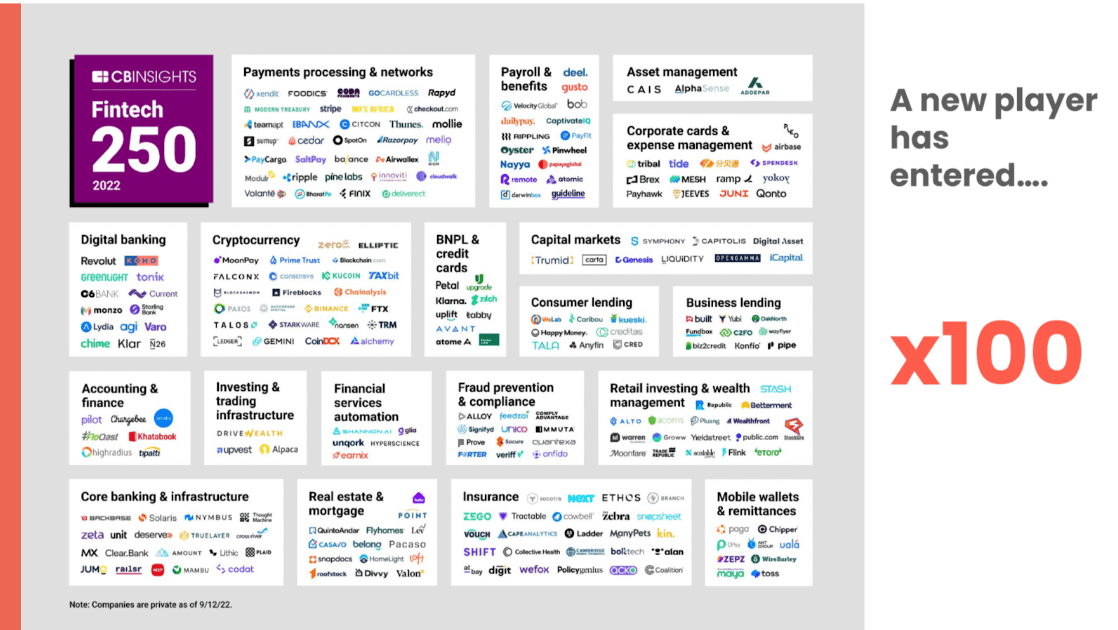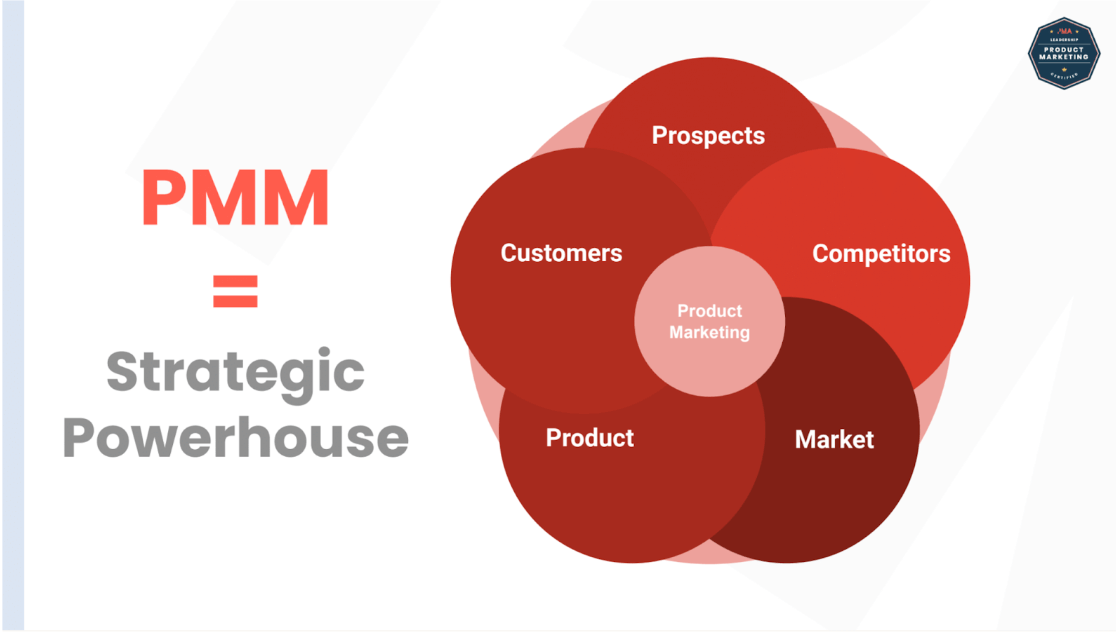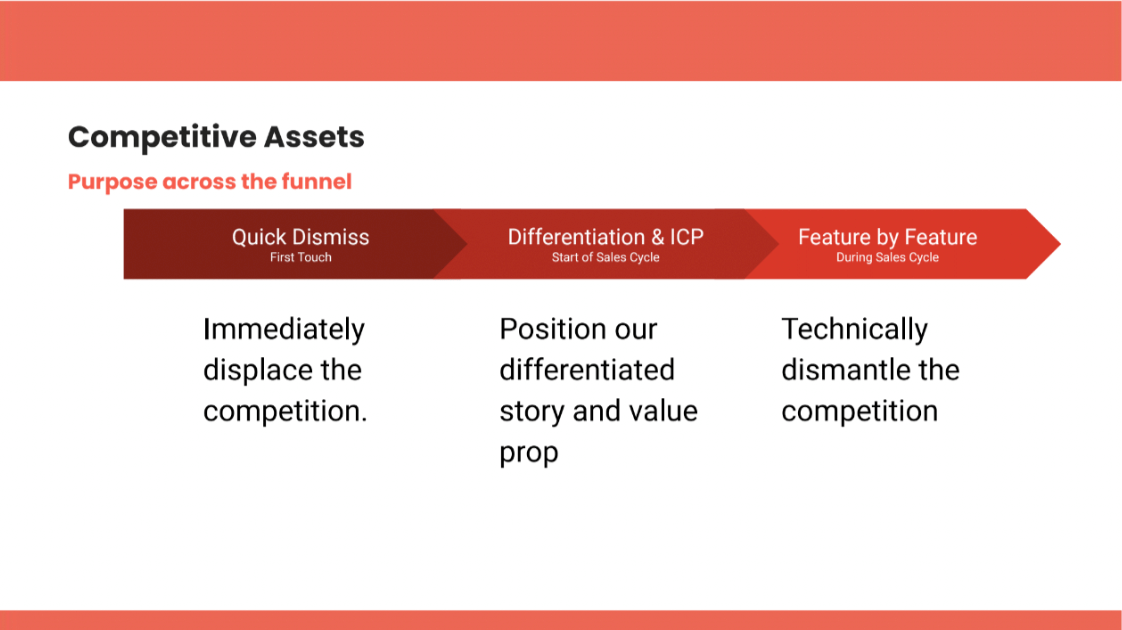This article was adapted from Sonduren’s presentation at the Product Marketing Summit in Vancouver.
Hi, my name is Sonduren, and today I'm going to talk about competitive intelligence. I'm a very competitive guy, so this is a really exciting topic for me. More than that, it’s very important to your product positioning.
I'm going to be using examples from Airbase of how we differentiate and help our sales team compete in an ever-evolving competitive landscape. I also want to share how you can make product marketing into an even more strategic function and guarantee it a spot at the table.
Particularly, I'll hone in on the following areas of discussion:
- How to make your brand stand out in a crowded market
- Using competitive differentiation to hone in on your market
- How to support product, sales, customer success, and marketing through competitive intelligence
- Earning validation through reviews
- Tracking the outcomes of your competitive intelligence program
How to make your brand stand out in a crowded market
In case you’re not familiar with Airbase, we’re a spend management platform, which means we operate in a very competitive space.
You've probably heard of Expensify. Perhaps your accounting and finance teams use a solution like Bill.com to pay invoices. Many companies also have corporate credit cards – or AmEx – for their executives. We’re up against some stiff competition.

With around 100 competitors all talking about managing expenses for the office of the CFO, the Comptroller, and the Assistant Accounting Manager, Airbase needed to find a unique and differentiated story that would resonate with our target audience. Just saying “We help do your expenses” wouldn't cut it in such a competitive market.
To stand out, it's essential to deeply examine both direct and indirect competitors and understand the customer segments they target.
If you want to succeed, you have to enable your sales team and your organization as a whole to focus on winning strategies instead of just throwing darts at the board. One way to do this is by leveraging competitive intelligence to become a strategic powerhouse in the business.

In any market, you’re going to encounter direct and indirect competitors, and it’s essential to understand both.
For instance, there are various solutions to manage business expenses, and as an accountant, you might need to conduct customer and market research and buy individual components.
I’m going to call the providers of those individual components our indirect competitors as Airbase aims to provide a broader platform that solves multiple problems in one solution.
Using competitive differentiation to hone in on your market
To understand the competitive landscape, you need to examine the products your competitors sell, their positioning, pricing, sales process, channels, marketing materials, events, and more. This requires a lot of research and may require some specialized intel-gathering tools.
Competitive differentiation can be a lot of work. You might spend hours each week collecting insights from sources like Google Alerts and competitors' help centers and then sharing them with your sales teams via Slack channels.
You need to prioritize your efforts by focusing on the competitors you encounter most often in the sales cycle. From there, you can identify gaps in the market, develop new products and services to gain more market share and discover emerging trends.
So what does this look like? Well, let me give you an example. When I joined Airbase, I had experience as a corporate accountant, but I still needed to understand the rapidly evolving landscape. Our sales team was facing serious competition in every single deal.
To address this, we created an Excel document to compare the capabilities of our main direct and indirect competitors. It wasn't an elegant solution, but it helped us understand our technical differentiators and value propositions compared to the competition.
This information was crucial in identifying how we could differentiate ourselves from the sea of competitors that we wanted to beat. It was challenging at first, but eventually, we gained an understanding of how to differentiate ourselves.
Now, at Airbase, we target accounting and finance teams from mid-market organizations that need to consolidate their non-payroll spending in one solution.
For accounting teams, this means addressing pain points, such as wasting time on tasks that Airbase now automates, like ledger entries and manual month-end processes – the very tasks that made me quit accounting and get into marketing! Saving time and money and reducing risk are critical factors here.
Our CRO is always emphasizing the importance of focus in making companies successful. For instance, some competitors focus on corporate card solutions, while others target the mid-market space or the office of the CFO.
There're also companies solving expense management problems at the enterprise level, such as Coupa, which deals in big implementations involving lengthy change management processes.

When people bring up our competitors, we differentiate ourselves by emphasizing the market segments and unique pain points that our solution addresses.
For instance, some competitors cater to founders and small businesses, while others, like Coupa, are designed for large corporations with implementation costs reaching half a million dollars. Understanding your target segments and personas and their unique pain points is crucial in helping your sales team.
How to support product, sales, customer success, and marketing through competitive intelligence
Supporting not only your sales team but also your customer success team is essential because competitors may target your accounts.
Rather than giving your customer-facing teams lists of features to dump on clients and prospects, you want to arm them with three main types of assets that are going to help them in competitive scenarios:
1) Quick dismiss: When you’re talking to a prospect who is looking at various solutions, you want to immediately displace the competition. Emphasize why a particular solution might not be suitable for them, and bring proof.
For example, maybe a competitor’s solution is built with enterprises in mind and will take months to implement, while your solution is more suitable for businesses their size and can get up and running right away.
2) Differentiation and ICP: If the quick dismiss doesn't work, differentiate with your story and ideal customer profile (ICP). Make sure the prospect understands that your solution was created specifically for them.
Your brand narrative should reflect this. In our case, we share our founder's story of building the solution for accounting and finance teams in midsize companies.
3) Feature by feature: You want to avoid getting into a feature match early in the sales process.
However, in the later stages of the sales cycle when prospects start asking about features, that's when you need to technically dismantle the competition. The competitive analysis I talked about earlier will be super helpful here.

This approach not only helps your sales team sell but also informs your long-term strategy. Focusing on sales and customer success will improve your storytelling, messaging, and positioning.
At Airbase, product marketing is also involved in all strategic discussions regarding our product roadmap and market direction, thanks in large part to our expert knowledge of the market.
Keep in mind that everything we’ve been discussing will evolve over time. In the past few years, we've seen companies trying to capture various market segments, which has prompted them to adapt their strategies and target different segments.
So, expanding out to different segments made us realize that focus is really key. Companies are now concentrating on their target segments to achieve efficiency and cost-effectiveness.
Your market knowledge is also going to help you build battlecards, one-pagers, talk tracks, objection handling, comparison feature pages, and pricing and packaging strategies. As a disruptor in the industry, it's crucial to know how to price and package effectively relative to the competition. To do this, you have to understand your competitors' pricing.
Explaining your positioning and providing your take on the market is not only important for prospects but also for analysts.
At Airbase, this is all the more important as we're creating a new category called "spend management," which analysts may not be familiar with. As you move upmarket, analyst relations become increasingly vital, so you need to keep them in mind as you’re gathering competitive intel and building assets.
These efforts contribute to your organization's success, and all of this is possible when you have a thorough knowledge of your competitors. In fact, the product marketing team at Airbase knows our competitors as well as we know our own product, which is enormously beneficial.
Earning validation through reviews
While competitive intelligence and the assets you can build with it are incredibly powerful, it’s also a great idea to add a little external validation to the mix.
Particularly in the SMB and mid-market space, customer reviews and advocacy are essential. Prospects look for customer reviews, so platforms like G2 can be invaluable.
It's also important to emphasize the relevance of those reviews to your target audience. For example, you can highlight to your prospects how many of your G2 reviews came from people like them.
In our case, we can show that our reviews come from the office of the CFO, proving that our solution is tailored to them. You can then point out other achievements and third-party accolades to further validate your product for your target market and persona.
Tracking the outcomes of your competitive intelligence program
Tracking the outcomes of your competitive intelligence program is crucial because it requires a significant investment.
In lean startups like ours, you want to measure the ROI and the value this program adds to your business to secure further investment from your organization.
Here're a few of the areas you’ll want to track:
- Competitive pages: Working with a digital team to answer the following questions will help you demonstrate the impact of your competitive intelligence program on your business.
- How much awareness are your competitive pages driving?
- How many leads are they generating?
- How much revenue are they influencing?
- Sales enablement and training: Metrics like pipeline velocity and win rate are extremely valuable but often overlooked. Fortunately, there are tools available like Highspot that allow you to track the usage of assets like videos, one-pagers, competitive comparisons, and battle cards by your sales team. This information can then be marked in Salesforce, allowing you to track pipeline influence.
- Guiding strategy: This is another critical aspect of product marketing, especially for fast-growing markets that may pivot frequently. By positioning product marketing at the strategic table in your organization, you can leverage insights as a subject matter expert and provide quantifiable business impact. With this, you’ll be able to secure more investment for tooling, headcount, and resources and continue to provide value.
Final takeaways
The key takeaway is the importance of nailing your positioning. To do this, you have to not only understand the markets, your product, and your competitors but also package all of this information together to get into the details.
It's not easy work, but it’s the only way product marketing teams can be truly impactful in their organizations. This is how you’re going to get your CEO, CRO, and other leaders to bring product marketing into strategic discussions without you even having to ask.


















 Follow us on LinkedIn
Follow us on LinkedIn




.svg?v=36ab76060b)